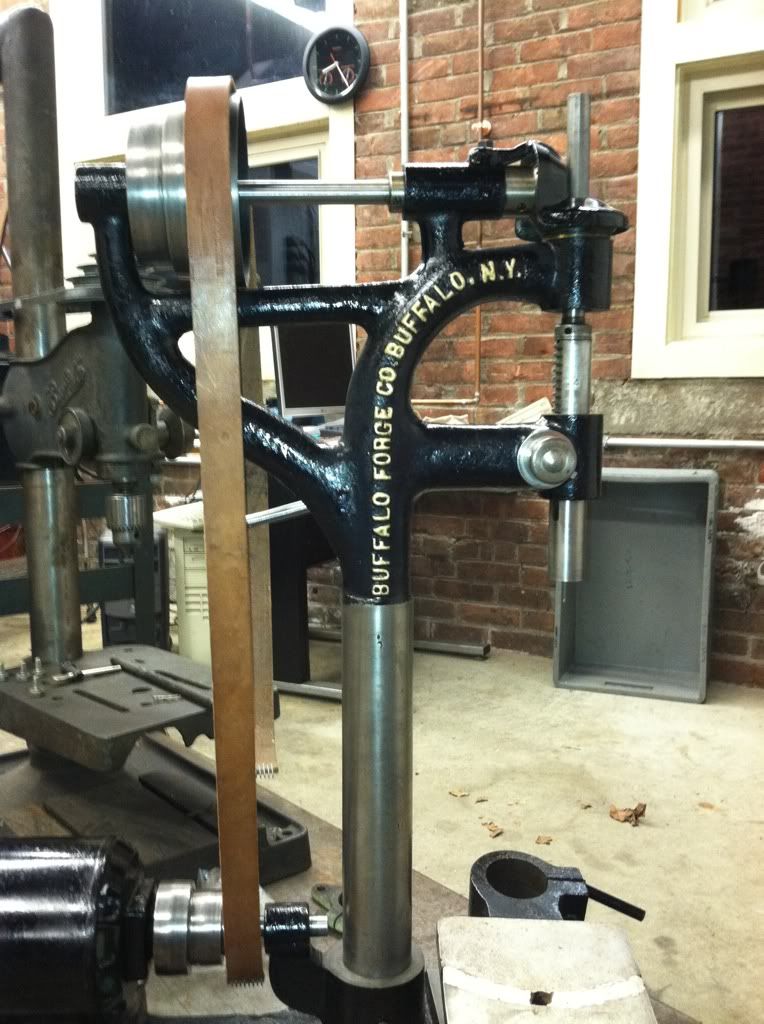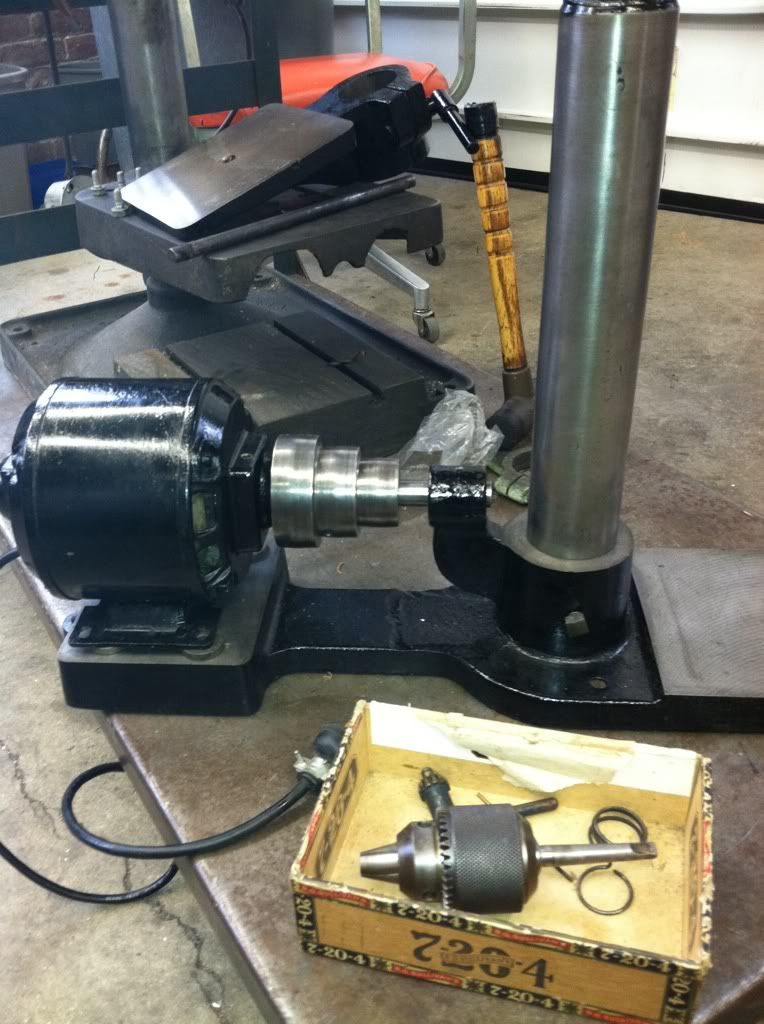Here are some updated images of my small herd of Buffalos, including the newest members. I've cropped the images and reworked the frequency curves in Photoshop to show more detail. I hope these will be of use to any Buffalo owners in identifying machines and their original configurations.
Buffalo 20:
Buffalo 20 1
Buffalo 20 2
This is, I believe, an early Buffalo 20, from the 1900-1925 era. Note the short base with no pad for a motor mount. It originally would have had about a 3" x 10" flat belt pulley on the back of the jackshaft, for the drive up to the lineshaft. I believe that everything else on this machine is original, with the exception of the V-belt strung over the power feed pulleys and the homemade table elevation crank. The main feed lever is broken off, but I have all the parts. As usual, there are a lot of holes in the table. Other than that, it's actually in very nice shape. It's more dirty than rusty, and almost everything rotates. A good candidate for restoration. I bought it here in the LA area for $100.
Buffalo 10's:
These are the small benchtop Buffalo Camelbacks. I believe that the 10" is the smallest size they made. Can anyone confirm that? I currently have three of them.
Buffalo 10 1
Buffalo 10 2
Buffalo 10 3
This is the one that I bought from Craig (Hambone), a regular PM Forum member a few months ago. It appears to be completely original, except for the V-belt pulley on the back of the jackshaft. It's also missing the downfeed lever (which is just a round bar). It has the complete jackshaft yoke assembly, which many are missing. The only repair this one needs is the forward bearing of the camelback shaft. It's worn out and needs to be replaced.
I don't know how long Buffalo made this model, but I'm guessing 1900 to 1940. Does anyone know? I believe that some are around which have a motor mount pad cast into the base. My three don't, so they are probably earlier. I haven't seen any serial numbers or dates on them.
Buffalo 10 4
This is another of the same model, which I found in Huntington Beach. It's in nice running condition. The previous owner made up the motor mount and rigged it up with the V-belt pulleys. I got the original flat belt cone pulleys with it, but unfortunately, he didn't have the jackshaft yoke. I'll be converting it back to original.
Buffalo 10 5
Buffalo 10 6
Buffalo 10 7
This one turned up a few years ago here in Burbank. It's been modified (or butchered, if you prefer) with an extended upper shaft, the overhanging drive, an odd mid-height arm-table, and a big notch cut out of the base. But it's an unusual machine, different from the others. The frame/column is about 5" shorter in height than the other two, and the base is smaller with different bolt pads. The base has been heavily damaged and repaired, in addition to the notch. It's been broken, rewelded, and screwed down to a thin steel plate. There's probably not a whole lot I can do to repair it. I guess I'll either leave it alone or make up a whole new one. Everything else can be undone. The flat belt cone pulley that's on there isn't original. I recognize it as from a South Bend 9" lathe drive. However it's nearly identical in dimensions to the original Buffalo pulley. This may be useful to any of you trying to restore a Buffalo 10.
The previous owner of this red one told me that he had been told by another previous owner who had been told by someone at Buffalo that this particular machine was a very rare early one, something like the 3rd one made. I have no way of verifying this, but if anyone knows something, tell me!
I'll be restoring all three of them to as close to original configuration as I can. I'm planning to paint them Satin Black and mount all three in a row on a nice wooden bench. It'll be a (light duty) production setup for a series of musical instrument parts that I make.
Buffalo Junior:
Buffalo Junior 1
Buffalo Junior 2
Just for your reference, this is a Buffalo Junior drill press. It's technically not a camelback, but in the same family. It's 10" swing but much shorter in height than the 10" camelbacks. The belt drive goes around the spindle pulley, and turns down over a pair of idler pulleys to the jackshaft or motor at the back. This one is missing the cast bracket that holds the idlers, however the seller gave me a pair of idlers that he believes came from it. I believe that this machine is a later model, probably from the '40's, because it has the V-belt pulley on the spindle and the full motor pad on the base. Other guys have Juniors with flat belt pulleys. The V-belt pulley on mine is definitely original, because it's machined in with the upper spindle collar. The odd thing is that the two idlers that I got with it are crowned flats. Has anyone seen any catalog pictures of the V-belt version of the Buffalo Junior?
All five of these machines are waiting in line for my time to restore them. Unfortunately (or fortunately?) I've been overloaded with musical instrument work this year and haven't had much time to put into my beloved old iron.
I hope this all helps other Buffalo owners as a reference!
Bruce Johnson




